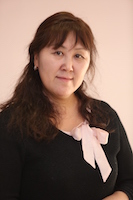Gender stereotypes in Tuvan proverbs and sayings
DOI:
https://doi.org/10.25178/nit.2020.1.2Keywords:
Tuvan language; paroemia; proverbs; sayings gender stereotypes; male stereotypes; female stereotypes; androcentrism; androcracyAbstract
The article examines traditional gender stereotypes as they appear in Tuvan paroemias and the assessment of these paroemias by Tuvan respondents. The survey made use of the method of intent analysis to identify the intentions (hidden agendas) of proverbs and sayings, and also of the scale of assessment of gender stereotypes. For our study, we selected 75 proverbs and sayings containing a description of male and female behavior. To evaluate and compile the scale, the list was narrowed down to 45 paroemias reflecting gender stereotypes and social behavior of men and women. In June 2018, 120 Tuvans of both genders were surveyed, belonging to either of the two age groups - 18 to 35 and 36 and abover.
On the whole, Tuvan paremias reflect in detail the hidden intentions of gender stereotypes. The paremias present traditional family and tribal relations based on patriarchal attitudes, regulation of gender differences and dichotomization of male and female. Male stereotypes, as reflected in Tuvan proverbs, feature such hidden intentions as «Praise», «Evaluation», «Instruction», «Advice», «Teaching», while female Tuvan stereotypes focus on intentions like «Instruction», «Evaluation», «Praise», «Teaching», «Condemnation».
Respondents largely agree with the traditional views of male and female behavior and tend to be sexist to women. These trends are especially pronounced in men and in older people. There was no significant difference between the sex and age samples in the assessment of proverbs.
References
Baizhanova, N. R. (2004) Metaforicheskie obrazy, kharakterizuiushchie cheloveka, v altaiskikh poslovitsakh (v sopostavlenii s tuvinskimi) [Metaphorical characteristics of people in Altai proverbs (in comparison with Tuvan)]. In: Iazyki korennykh narodov Sibiri [Indigenous languages of Siberia] / ed. by N. B. Koshkareva, N. N. Shirobokova and A. R. Tazranova. Vol. 14. Novosibirsk, NGU. 236 p. Pp. 60–72. (In Russ.).
Bern, Sh. (2007) Gendernaia psikhologiia. Zakony muzhskogo i zhenskogo povedeniia [The Social Psychology of Gender]. Transl. from Engl. St. Petersburg, Praim-Evroznak. 318 p. (In Russ.).
Dorzhu, Z. Yu. (2019) Interethnic interaction of Russian and Tuvans in Soviet and Post-Soviet Tuva: the case of ethnically mixed families. The New Research of Tuva, no. 1. URL: https://nit.tuva.asia/nit/article/view/835 (access date: 11.03.2019). (In Russ.). DOI: 10.25178/nit.2019.1.11
D'on-serge okh tyla (Tyva öһün khoһoonnoro, okh tyllara) [Tuvan proverbs and witty sayings] (2001) / ed. by N. I. Safronova. Yakutsk, Bichik. 40 p. (In Yakut).
Egorova, A. I., Chochkina, M. P. and Sarbasheva, S. B. (2019) Psikholingvisticheskii analiz gendernykh stereotipov v altaiskikh i iakutskikh poslovitsakh [Psycholinguistic analysis of gender stereotypes in Altai and Yakut proverbs]. Tomsk Journal of Linguistics and Anthropology, no. 2, pp. 51–63. (In Russ.) DOI: 10.23951/2307-6119-2019-2-51-63
Kalzan, A. K. (1955) Tuvinskie narodnye poslovitsy i pogovorki [Tuvan folk proverbs and sayings]. Kyzyl, Tuvan book publishing house. 55 p. (In Russ.).
Kenin-Lopsan, M. B. (1987) Obriadovaia praktika i fol'klor tuvinskogo shamanstva. Konets XIX — nachalo XX v. [Ritual practice and folklore of Tuvinian shamanism. Late XIX — early XX century]. Novosibirsk, Nauka. 165 p. (In Russ.).
Kirilina, A. V. (1999) Gender: lingvisticheskie aspekty [Gender: linguistic aspects]. Moscow, Institut sotsiologii RAN. 189 p. (In Russ.).
Kletsina, I. S. (2009) Gendernaia psikhologiia [Gender psychology]. St. Petersburg, Piter. 496 p. (In Russ.).
Kurbatskii, G. N. (2001) Tuvintsy v svoem fol'klore (istoriko-etnograficheskie aspekty tuvinskogo fol'klora) [Tuvans in their folklore: Historical and ethnographic aspects of Tuvan folklore]. Kyzyl, Tuvan book publishing house. 464 p. (In Russ.).
Mannai-ool, M. (2002) Obychai tuvinskogo naroda [Customs of Tuvan people]. In: Uchenye zapiski, vol. 19. Kyzyl, TIGI. 326 p. Pp. 52–59. (In Russ.).
Orus-ool, S. M. (1997) Tuvinskie geroicheskie skazaniia [Tuvan heroic legends]. Novosibirsk, Nauka. 479 p. (In Russ.).
Ocherki tuvinskogo fol'klora = Tyva ulustung aas chogaaly [Essays on Tuvan folklore] (1976) / Kuular, D. S., Grebnev, L. V., Kalzan, A. K. et al. Kyzyl, Tuvan book publishing house. 146 p. (In Russ.).
Potapov, L. P. (1973) Umai — bozhestvo drevnikh tiurkov v svete etnograficheskikh dannykh [Umai, the deity of the ancient Türks, in the light of ethnographic data]. In: Tiurkologicheskii sbornik / ed. by A. N. Kononov. Moscow, Nauka. 412 p. Pp. 265–286. (In Russ.).
Teliia, V. N. (1996) Russkaia frazeologiia. Semanticheskii, pragmaticheskii i lingvokul'turologicheskii aspekty [Russian phraseology. Semantic, pragmatic and linguocultural aspects]. Moscow, Yazyki slavianskoi kul'tury. 289 p. (In Russ.).
Khadakhane, M. and Sagan-ool, O. (1966) Tuvinskie poslovitsy i pogovorki [Tuvan proverbs and sayings] / comp. by M. Khadakhane and O. Sagan-ool. Kyzyl, Tuvan book publishing house. 77 p. (In Russ.).
Khertek, Ia. Sh. (1985) Russko-tuvinskii frazeologicheskii slovar' [A Russian-Tuvan phraseological dictionary]. Kyzyl, Tuvan book publishing house. 299 p. (In Russ. and Tuv.).
Best, D. L. (2001) Gender Concepts: Convergence in Cross-Cultural Research and Methodologies. Cross-Cultural Research, no. 1, pp. 23–43.
Lease, S. H., Montes, S. H., Baggett, L. R., Sawyer, J., Fleming-Norwood, K. M., Hampton, A. B., Ovrebo, E., Ciftci, A. and Boyraz, G. (2012) A Cross-Cultural Exploration of Masculinity and Relationships in Men From Turkey, Norway, and the United States. Journal of Cross-Cultural Psychology, no. 6, pp. 84–105.
Williams, J. E., Best, D. L., Haque, A., Pandey, J. and Verma, R. K. (1982) Sex-trait stereotypes in India and Pakistan. Journal of Psychology, no. 111, pp. 167–181.
Published
How to Cite
Egorova A. I., Kondakova A. P. and Kuzhuget M. A. Gender stereotypes in Tuvan proverbs and sayings. The New Research of Tuva. 2020, no. 1 [online] Available at: https://nit.tuva.asia/nit/article/view/903 (access date ... ). DOI: 10.25178/nit.2020.1.2
Issue
Section

Author(s) license holder(s) grant rights for their work to the journal (grantee of a license) under the simple non-exclusive open license in accordance with Art. 1286.1 «Open license for a research work, work of literature or fine arts», Civil Code of the Russian Federation.
New Research of Tuva publishes articles under the Creative Commons Attribution-NonCommercial license (CC BY-NC).
Since it is an open license, author(s) reserve the right to upload the article to their institutional repository, submit it to another journal (if it allows republications), or republish it on their own website (in full, or in part).
However, several conditions apply here:
a) The republished version must always contain the name(s) and affiliation(s) of the author(s), the original title and the hyperlink to the original version on the New Research of Tuva website;
b) It must be in open access, free of charge, and no category of readers must be in any way whatsoever advantaged over general readership.
c) should the contribution be submitted elsewhere by its author(s) without substantial modification (30% or more of original text unchanged), the body of the article should contain a disclaimer that the original version was published in New Research of Tuva (with a link to the respective page)
The CC-BY-NC is a non-revocable license which applies worldwide and lasts for the duration of the work’s copyright.











